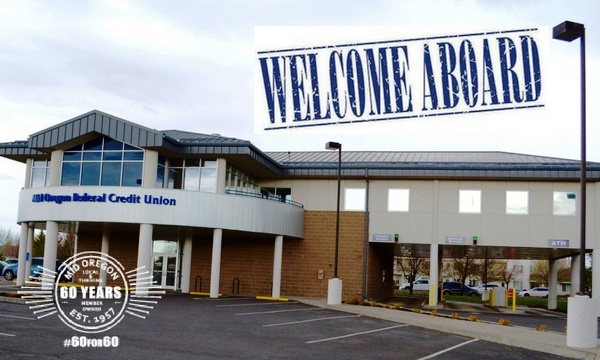The Bottom Line
Small business is important to Central Oregon, and to Mid Oregon. Find tips and resources for business, and information about Mid Oregon’s commercial services and business members.

Six Travel Hacks to Keep You Out of Harm’s Way
Traveling to new cities and countries is fun and exciting. Many times, we have been planning big trips for years, and have invested a lot of time and money in making it happen. That’s why Mid Oregon is providing these six travel hacks to keep you out of harm’s way.
To make sure you have a great time and only create happy memories of your adventure, keep these helpful tips in mind.
Keep important medical information on your phone
If you have a medical condition or severe allergies, consider using an app to display this information on your phone’s lock screen. You can use the Health App if you have an iPhone or Medical ID if you have an Android. This is especially helpful if you’re traveling alone.
Have a room reserved for your first day
Some people like to travel spontaneously, pulling into towns with no idea where they’ll stay. But what if there’s a special event going on and all the hotels are full? Prepare ahead of time and make sure you have somewhere to spend the night when you arrive. And don’t skimp too much – you’ll probably be tired the first day and not feel at your best, so choose a place that has good security and amenities.
Be willing to spend when you don’t feel safe
What if you did reserve a place to stay and your Airbnb rental or motel turns out to be in a neighborhood that doesn’t make you feel safe? Grab a cab and head to hotel or motel in a safer area for the night. The next day, look for something in your price range and stay there for the remainder of your stay. Saving a few dollars by lodging in an unsafe area is not worth the risk.
Be aware of your surroundings
Always be aware of your surroundings and keep your belongings close to you. Also, if you drink alcohol, drink responsibly. A drunk person is easy to rob or worse.
Hide cash in your shoe
If your wallet gets lost or is stolen, having a $50 or $100 in your shoe can be a lifesaver. Without a debit or credit card, you’ll have a difficult time getting food or even getting back to your hotel. The cash will help you get through the night until credit unions are open the following day.
Don’t keep all valuables in one place
Split up your cash, credit cards, and hotel keys so they’re not all in one wallet or purse. Put some in a pocket or money belt. That way, if you are robbed, you can hand over the wallet without losing everything.
Mid Oregon Credit Union has some additional resources to make your trip safer and more enjoyable. Our Travel Money Card or Prepaid Debit Cards can save you a lot of headaches while traveling. Check our website or visit one of our seven Central Oregon branches to learn more.

President’s Message: New Members, New Opportunities
High Desert Bank
On June 15, Mid Oregon Credit Union completed a purchase and assumption of the loans and deposits of High Desert Bank totaling approximately $21 million. The conversion was successful with extremely few issues. We made direct contact by phone and mailings and made sure they had checks, debit cards, and other resources in place and ready to go immediately after the conversion.
Although 2018 was setting up to be another successful year at Mid Oregon already, with healthy economic and job growth forecasts for Central Oregon—this purchase gave us additional opportunities.
New Relationships
To us, it was a chance to add strength, build on our position in the community, and forge new relationships. To the customers of High Desert Bank, however, it had the potential to be like so many bank mergers and takeovers— an unplanned inconvenience. Our team set out to change that perception and make the process of “unbanking” as seamless as possible.
We carefully planned the transition process, determined the best way to communicate with our new members, and walked them through the steps. When the conversion occurred in mid-June, we were delighted to welcome our new members aboard with minimal issues.
Increases Commercial Services Capacity
While we’re happy to offer increased services and convenience to our new members, our existing members also reap the benefits. Four of the five employees at High Desert Bank have chosen to join our team, bringing decades of experience in serving commercial accounts and allowing us to increase our capacity to serve the needs of more local businesses.
An accomplishment like this can’t happen without a great team—folks who work well together, dig in to solve problems quickly, and put themselves in the member’s shoes. Our team strives to be humble and open to feedback (especially the difficult kind), so we can keep getting better.
More Frequent Member Surveys
We welcome your feedback too! We’ve increased the frequency of our member surveys to four times a year to be as responsive as possible. If you’ve participated recently, thank you for the valuable feedback. If you haven’t, feel free to leave us a message or comment on our website, www.midoregon.com.
Thank you for being a member of Mid Oregon Credit Union!
Bill Anderson

Refer a Friend-Win a Traeger?
Word of Mouth is Best Advertising
Mid Oregon Credit Union knows that our members are generally very satisfied with their experiences with us. It’s one of the biggest reasons we’ve just surpassed the $300 million in asset milestone in June, after eclipsing the $200 million mark less than 4 years previous.
We know that Word of Mouth is a trusted way for people to learn about their buying options, and that is certainly true for financial services. That’s why a couple of years ago we launched a new referral program called “Tell-a-Friend.” Anyone who refers another person who opens up a new checking account gets a $10 gift card, with no limit on how many gift cards you can earn. This is another reason we continue to grow.
Refer Someone for Mid Oregon Checking Account
Part of the Tell-a-Friend program’s success is that the new checking account members are automatically entered into a drawing at their branch. Winners in the past have taken home new TVs, $250 gift cards to Bi-Mart & Sportsman’s Warehouse, Alaska Airline certificates, and more. And right now, through August 25, the drawings will be for a new Traeger Pellet Grill from Fin and Fire in Redmond, valued at $429.
But now, we’ve done something more- through 9/20/18, the person who refers the new checking account member will automatically be entered to win a Traeger Ranger Grill, valued at $399! So, for every new checking account they refer, they’ll get the $10 gift card, and will get one entry into the Ranger drawing to be held on 9/21.*
The Traeger Ranger Grill
The Ranger grill is a unique, portable style suitable for not only for camping and backyard BBQs, but tailgating and other mobile uses. We will be showing the grill at the Deschutes County Fair on Friday, August 3, and at other events and activities around Central Oregon for the next several weeks. Come and say hi when you see us, and see the grill in person!
How To Enter to Win?
So how can you easily get a Tell-a-Friend and enter our grill drawing?You have two options:
- Right now, visit our referral webpage to send emails to your friends, family, neighbors and co-workers. It’s easy and allows you to add a customized message to each email.
- Pick up some Tell-a-Friend slips from us at events or any Mid Oregon branch. You briefly fill in your part, give them to your friends, and they bring the coupon with them when they open the account. It is pictured below.
- Remember, either way, when they open their new checking account they’ll be entered to win a Traeger Pellet Grill (or a different prize after 8/25) and you will get a $10 gift card. If one of your referred people opens a new checking account, you’ll be entered into the drawing!
* Traeger Drawing Rules: No purchase necessary to enter or win a prize. Must be 18 years of age or older. Entries accepted through September 20, 2018. No cash equivalent, substitution or transfer of prize permitted. Other restrictions apply. See a Mid Oregon Associate for details.


